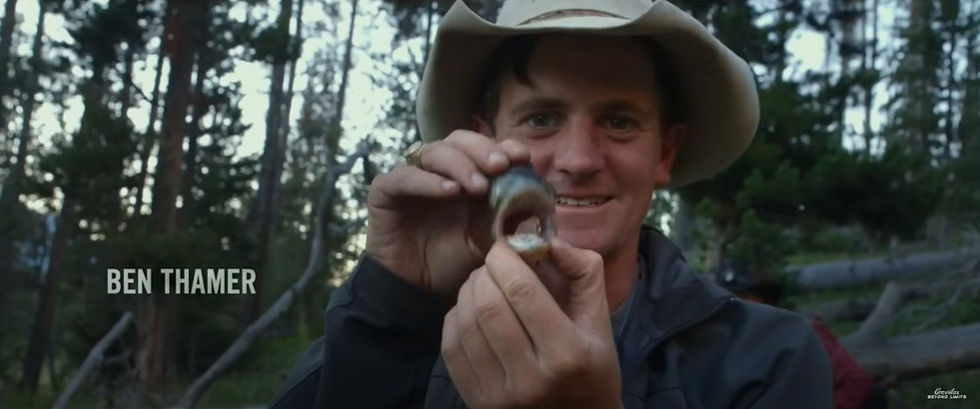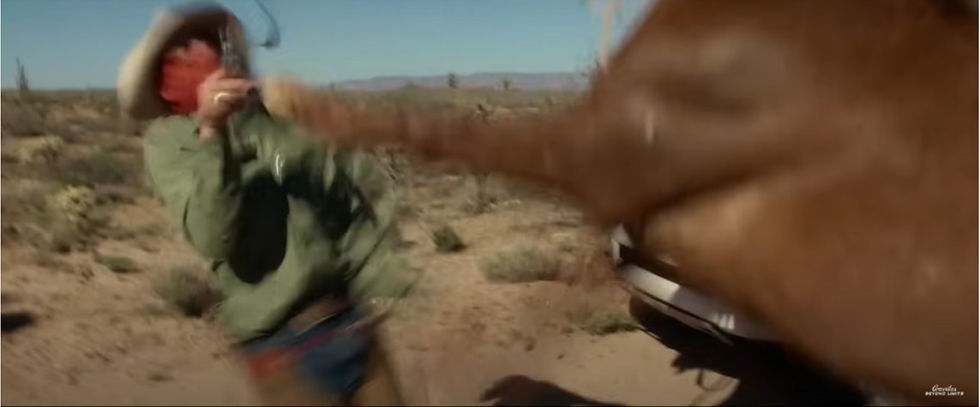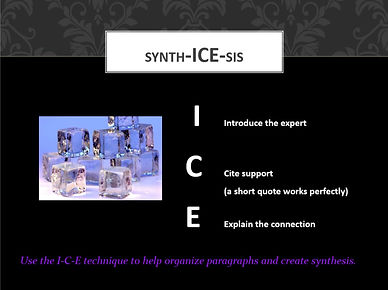Writing Projects
Written by Zoey Vlake on May 1, 2024
Abstract:
A reflection of everything I learned during my semester in the W131 reading, writing, and inquiry class. I go over all the projects in chronological order while linking them to several class goals and use specific lessons and examples as evidence.
Reflection: What I Learned in W131 Reading, Writing and Inquiry
_edited.jpg)
They say one of the most important skills to learn in life is the art of making a good first impression. Over this semester, I found that this advice holds true for interacting with others and in writing as well. In the beginning of W131 reading, writing, and inquiry we were not given an elaborate syllabus with detailed specifications on what to write and how to write it. Instead, we were welcomed in right at the start with the “possibilities of yet” (Dweck). For our first writing assignment we responded to Carol Dweck’s Ted Talk on having a growth mindset. This not only opened possibilities for how the semester would go, but it also provided a great foundation for us to learn and grow as writers following a path that we ourselves created.
Carol Dweck




Examples of In Medias Res, Character, and Setting in "Unbranded"
In my response to Dweck I stuck to a very specific layout that I learned in high school. This method worked really well for responding to other pieces because it is packed with information and provides a clear roadmap for what the rest of the essay will be about. However, when done over and over again this method becomes repetitive and bland. “When it comes to achieving a growth mindset, the most important part is the process itself. By rewarding the effort instead of the result, people begin to see failure as a challenge to overcome and become more resilient and well-rounded as a whole” (Vlake). This roadmap from my first essay this semester relies heavily on logic and at no point did I incorporate ethos or pathos.
“When it comes to achieving a growth mindset, the most important part is the process itself. By rewarding the effort instead of the result, people begin to see failure as a challenge to overcome and become more resilient and well-rounded as a whole” (Vlake).
I stuck strictly to the facts by explaining the benefits of a growth mindset and the process of achieving one. This worked fine for a first response to Dweck, but to tell an interesting story or compelling argument I needed to expand beyond that and learn how to appeal to emotions and ethics as well.
“Through the information provided by psychology and autism experts such as Dr. Temple Grandin, a deeper emotional journey in each individual family member comes to light as their physical journey through Mongolia progresses” (Vlake).
For the film review I switched it up a bit by focusing a bit more on the danger and what the family could gain from a successful trip. “Through the information provided by psychology and autism experts such as Dr. Temple Grandin, a deeper emotional journey in each individual family member comes to light as their physical journey through Mongolia progresses” (Vlake). A large part of “The Horse Boy” was the story of how much Rowan grew and changed throughout the film. To reflect that in my review, while I do point out the science behind everything and back it up with the interviews from several experts, my film review also emphasizes the importance of family bonds and the role that these emotional themes play in the documentary.
The reason for this is that the film review was for a different audience. Normally in papers I write in a manner that makes sense to my professors, but for the film review I learned to shape revise and edit my writing to meet the concerns of a more specific audience. “The Horse Boy” is specifically filmed with parents of children with Autism in mind. My writing reflects that by emphasizing the danger and overcoming that danger to display what that specific audience can also gain by watching the film.
An important part of tailoring writing to any audience is proper sourcing to give your writing credibility. Prior to coming to college, I had never used MLA or APA formatting. My teachers taught me how to integrate quotes into my writing using the SEE method (source, explain, expand) which I display throughout all of my writing, but I never learned anything beyond that. In this class we learned methods like Anomolisa and ICE-ICE to create multiple source synthesis (MSS) paragraphs. These new techniques allow me to effectively synthesis ideas, integrate them smoothly, and document them in proper MLA format.
_edited.jpg)
The ICE-ICE outline slide
These techniques were especially crucial for my feature style Narrative. It was the piece that I did the most research and preparation for which included an immersion experience. Instead of writing about one specific topic, each of us were pushed to go out and get involved with an experience of our choice. For my immersion experience I went to children's TherAplay where I learned all about how horses can be used as a form of therapy for children with disabilities. Not only did this experience add to my research to add credibility to my writing, but it was also a great learning opportunity outside of this specific class as well. It gave me the chance to learn more about my major and further understand the possibilities within the field of psychology. I learned more about the different forms of therapy including speech therapy, physical therapy, occupational therapy, etc. This class also helped me refine the way I research information. I can find well known credible sources to back up my writing by using words like AND/OR as well as use quotations to narrow down my search results.
_edited.jpg)
Google Search Pointers
This was also a helpful skill to have while I was researching my argument. The whole point of an argument is to convince the reader to see your point of view and possibly do something about it. Without credible sources backing up an argument the whole thing falls apart and the reader will not trust any information within the paper.
"The domesticated horses that do not have homes were deemed unwanted horses in 2005 and have been an ongoing problem for even longer" (Vlake).
For my final ePortfolio I revised my argument and my Wix website. While my argument was not bad to begin with, there were a few sections that I noticed I could have researched further in order to be more specific in my writing. To display how much I have learned about proper sourcing and better research tactics I added a hyper link in the first paragraph. I also go into further detail in my second paragraph by adding specific years and causes for the rest of the topics I discuss throughout the piece. "The domesticated horses that do not have homes were deemed unwanted horses in 2005 and have been an ongoing problem for even longer" (Vlake).
This segment from my original argument draft does give one specific year, but it is still broad and does not further explain how long they have been a problem or how the public came to know about it. "The domesticated horses that do not have homes were deemed unwanted horses in 2005 and have been a known ongoing problem in America since the 1986 "bovine spongiform encephalopathy (BSE) outbreak" (Furry). By going into more detail in my revised argument I give it greater credibility and help the reader further understand how long unwanted horses have been a problem. Revising helped me learn to reflect on writing practices to improve them.
_edited.jpg)
In class as we built Lego's we learned that creating a specific base tailored for certain purposes is key to making the entire piece work. Whether we were going for height, color coordination, or structural integrity, each foundation was different. Psychologists have found that “all it takes is a tenth of a second to form an impression of a stranger” (Willis and Todorov). It is a little different for writing and not quite as immediate of a reaction, however it is still important to be able to write a strong introduction to justify why anyone should continue reading. By learning to utilize in medias res, setting, character, artifacts, and quotes to grab the reader's attention our class created even more possibilities for ourselves to be creative within the expectations of college level writing assignments. Following the lenient scaffolding that these techniques provide allows me to create a clear focus, strong thesis and leaves plenty of room to provide sufficient support in any type of writing. Whether I am writing an argument, a story, or a review I can now discover, explore, and analyze my ideas in order to write better with a stronger sense of ownership.
In reading, writing, and inquiry I learned a lot to help improve my writing, but I also learned other helpful skills. Learning to skim read helped not only with research, but it also helped me learn to read with greater confidence. For my final project I created this Wix website. I have never created a website before, but it was fun to experiment with all of the design options that are available. Following the 3x3x3x3x3 rule I was able to create visually appealing that added tot he overall appeal of my writing. To finish it up I added a description of each piece to orient the reader on each page. I also added an introduction on the home page to give readers an idea of what this ePortfolio is about.
This class taught me a lot of skills that I know will continue to come in handy through my college career. My writing has grown a lot in just this one semester. I can write more creatively while still being informative and descriptive. I can also better create a layout for what my each essay will be like thanks to the research methods and MSS techniques we discussed. Even so I still have a lot to learn, and I look forward to further applying these skills in my future classes as well as in my out of classroom experiences.